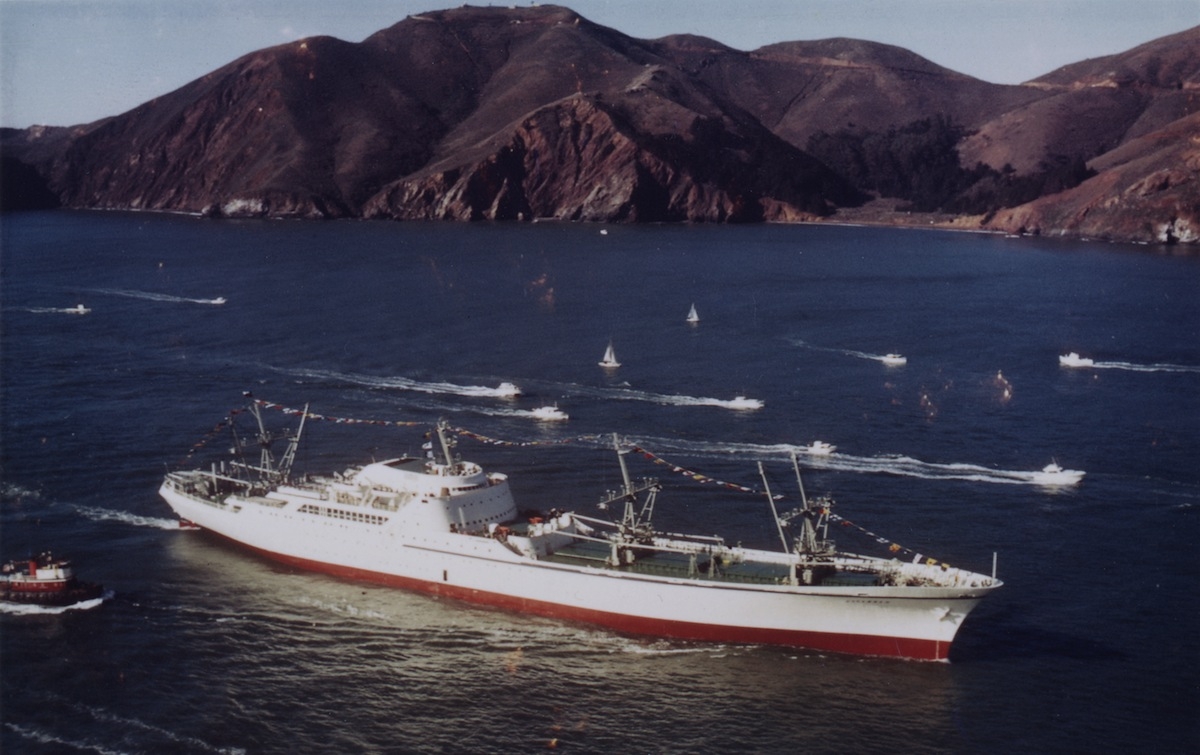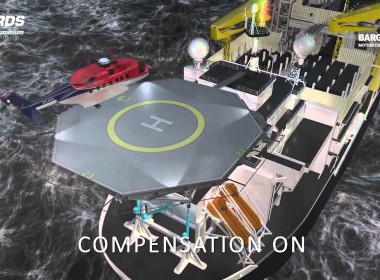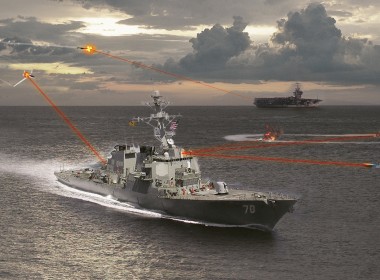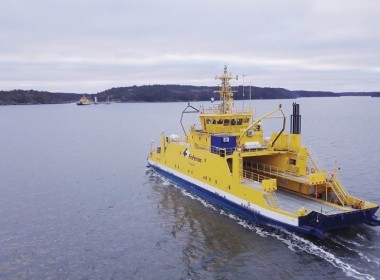COLUMN: Fuel for thought [The Bow Wave]

Over the past few years I’ve written about various options for fuelling work boats and cargo vessels. I’ve discussed batteries, fuel-cells and methanol, and I’ve also discussed the production of synthetic fuels for use in the maritime industry. This month I’m going to compare the different fuels and explain why I think that for the large vessels with high power and endurance requirements, we’re going to be sticking with hydrocarbons.
Note that I wrote “hydrocarbons” and not fossil fuel, whilst fossil fuels are all hydrocarbon, not all hydrocarbons are fossil fuels. Where am I going with this? I think that the use of synthetic hydrocarbons, produced using solar, nuclear or even hydrothermal power (see last month’s column), is going to be the future.
But first, let’s take a look at the fuels that are out there today as listed in the table which provides both the specific energy and energy densities of various fuel sources. Immediately we can see the various nuclear methods are light-years away from the competition. I was tempted to use a graph to illustrate this but realised that with all the chemical energy types fitting on one A4 sized page, I would need fold-outs extending several miles to include the nuclear types on the same scale.
| Storage material | Energy type | Specific energy
(Wh/Kg) |
Energy density
(Wh/L) |
| Deuterium-Helium-3 | Nuclear fusion | 107,000,000,000 | 1,100,000,000 |
| Uranium (in breeder) | Nuclear fission | 22,393,817,400 | 427,734,231,076 |
| Thorium (in breeder) | Nuclear fission | 22,060,493,400 | 258,115,206,492 |
| Hydrogen (compressed at 700 bar) | Chemical | 39,443 | 1,555 |
| Methane or natural gas | Chemical | 15,416 | 10 |
| Liquefied natural gas (LNG) | Chemical | 14,889 | 6,167 |
| Diesel | Chemical | 13,333 | 9,944 |
| Heavy fuel oil (HFO) | Chemical | 11,388 | 11,388 |
| LPG (including Propane / Butane) | Chemical | 12,889 | 7,222 |
| Gasoline (petrol) | Chemical | 12,889 | 9,500 |
| Jet fuel (Kerosene) | Chemical | 11,889 | 10,389 |
| Ethanol fuel (E100) | Chemical | 7,333 | 5,806 |
| Lithium-ion battery | Electrochemical | 100 – 243 | 250-731 |
| Alkaline battery | Electrochemical | 139 | 361 |
| Nickel-metal hydride battery | Electrochemical | 80 | 140-300 |
| Lead-acid battery | Electrochemical | 47 | 156 |
| Supercapacitor (EDLC) | Electrostatic | 3 – 10 | 14-17 |
Table 1 Comparison of specific energy and energy densities (source: Wikipedia)
Although several commercial nuclear powered ships have been built, with a pair of Russian icebreakers still in service, commercial operation of nuclear powered vessels has been a flop. It’s one thing to use nuclear to propel your $10 billion+ aircraft carrier that carries aboard it a further $10 billion in aircraft and armaments, but to propel a two hundred million dollar vessel with only a miserly couple of hundred million dollars of cargo aboard is overkill.
The NS Savannah was built during the Eisenhower administration, not to be profitable but to serve as a nuclear ambassador for the United States and its technological genius. Highly unprofitable in its day, it was sent into retirement only a year before the first oil crisis. It is conceivable that a modern reactor, built on an assembly line so as to take advantage of scales of production, could well be profitable when compared to HFO fuelled cargo ships.
The anti-nuclear crowd
But then we hit another problem, the anti-nuclear crowd. Even though it is one of the cleanest fuels available, the anti-progress section of our global community is unlikely to allow a nuclear-powered commercial ship to operate, just imagine the Facebook and Twitter campaigns that would be launched against any person or organisation even remotely connected to the project. We’ve seen how these types operate and the behaviour they’ll stoop to already, the Adani coal mine in Australia is just one example. Perhaps our Chinese colleagues could take a look?
So let’s take a look at battery power, remembering of course that batteries don’t produce energy, they only store it. For the rest of this column we’ll assume that any electrical energy is generated in a clean manner whether it be solar, wind or nuclear. Going back to our handy chart we see that lithium-ion batteries, the best of the best these days and for the foreseeable future, have only 7.4 per cent of the energy density and only 1.8 per cent of the specific energy of diesel, and that’s using best-case, still theoretical upper limits on the technology! For a small workboat that is to operate for only hours at a time with access to cheap electricity this is probably fine, but for a cargo vessel, or even a fishing boat that intends to spend more than a night at sea this will be insufficient.
Next off the cab rank is hydrogen which, when compressed has better scores than diesel. However hydrogen is a fickle atom and doesn’t like to be contained. Being such a tiny atom it can escape through even the best seals and gaskets with leakage rates that can see 50 per cent loss in less than ten days. Production too is an issue as, like with batteries it is really a store of energy rather than a source. Producing hydrogen via electrolysis is woefully inefficient with the bond between the hydrogen and oxygen atoms being particularly difficult to crack.
The current primary means of producing hydrogen is by mixing natural gas (methane) with steam which produces CO and CO2, completely defeating the aim of being carbon free. It also needs to be remembered that hydrogen is energy intensive in handling and storage. The compressors and refrigeration systems suck up power like crazy, and the extreme cold is a maintenance nightmare.
Back to hydrocarbons
So we return to hydrocarbons, specifically diesel. It has a relatively high specific energy and energy density but it needs no special storage and handling systems that would consume excessive energy during their operation and it can be produced synthetically in a carbon-neutral way. Diesel engine efficiency continues to improve dramatically, and will likely improve further if pure, synthetic diesel that is even higher quality than refined product is used. A global infrastructure already exists for its transport and distribution and it is safer than other liquid hydrocarbons.
Until nuclear becomes a realistic option, we simply have no better fuel for long duration operation than diesel.
Finally, I need to add a caveat to the synthetic diesel point. For my purposes I’m talking about truly synthetic diesel produced from the atmosphere and seawater, not a product of the fermentation of plant matter that too often uses soy or corn as a base product. I think that in the future we’ll see a rebellion against the use of food as a feedstock for fuel for vehicles as it clearly makes no sense whatsoever to use eco-fuel subsidies to force up the price of food. It is reprehensible that the people who are too poor to afford fuel in the first place are then hit with an increase in the price of food so as to justify some “feel good” attitudes.







